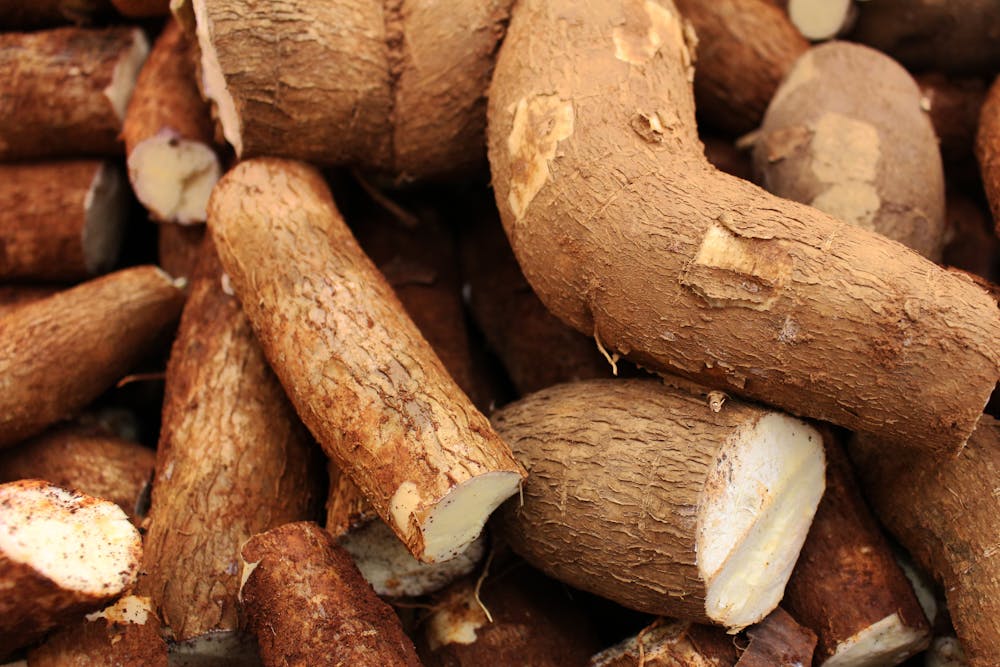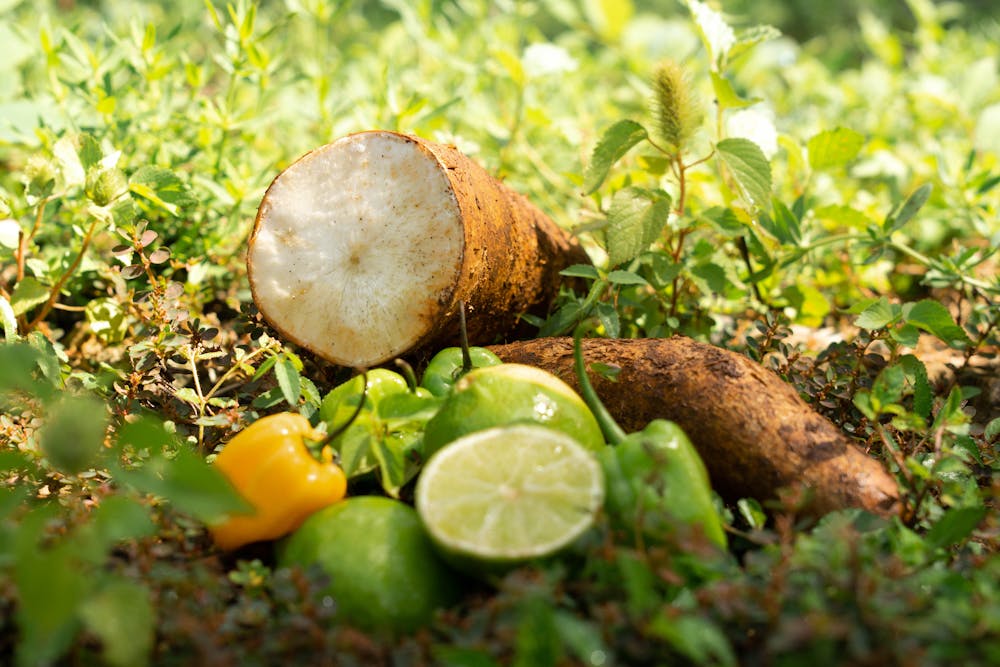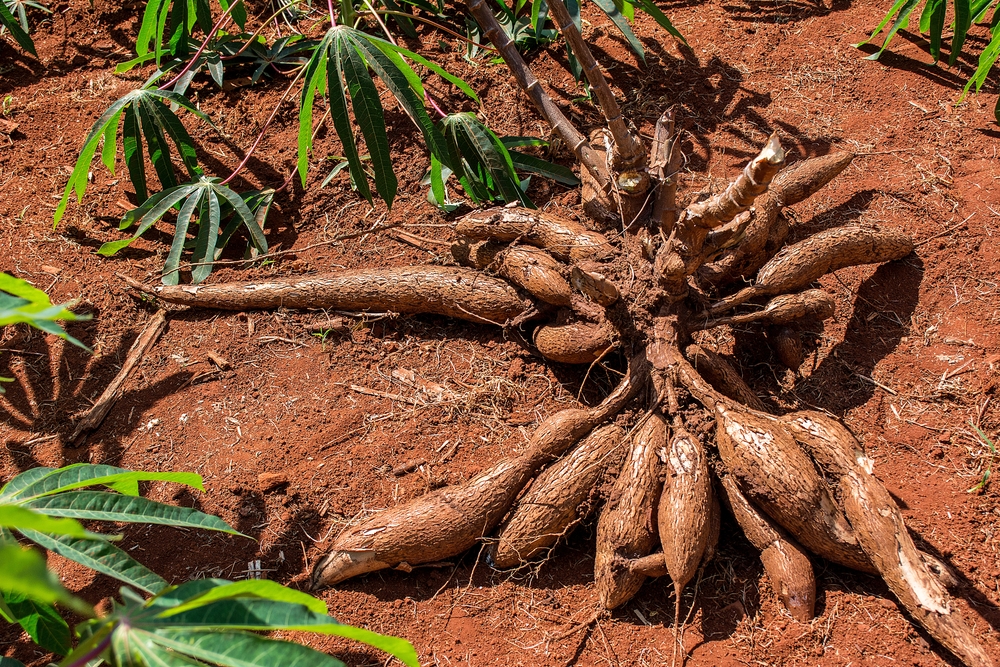World’s Deadliest Food Kills More Than 200 People a Year but Millions of People Still Eat It
Last updated on
Cassava is a Resilient Staple Crop
Authors Shubo and Yanyan state, “Cassava (Manihot esculenta Crantz) is a drought-tolerant, staple food crop that is grown in tropical and subtropical areas.” Cassava is a starchy root vegetable with a mildly nutty flavor, serving as a primary source of calories and carbohydrates for millions worldwide. Originally native to South America, it has become a crucial staple in many tropical regions. Today, Nigeria, Thailand, and Indonesia lead global cassava production, reflecting its significance in food security and agricultural economies. One of cassava’s defining traits is its resilience. It thrives in poor soils and harsh climates, making it one of the most drought-tolerant crops. This adaptability has made it a vital food source in regions facing unpredictable weather conditions. While cassava comes in sweet and bitter varieties, the sweeter type is more commonly consumed in the United States, often referred to as yuca, manioc, or Brazilian arrowroot.What Makes Cassava So Dangerous?
Cassava is a daily food source for millions, yet its raw form contains a hidden threat. The roots, peel, and leaves hold toxic compounds that can release hydrogen cyanide when not processed correctly. Eating it without proper preparation can lead to severe poisoning. Cyanogenic glucosides, the plant’s natural defense mechanism, protect it from animals and insects. When consumed, these compounds turn into cyanide inside the body. In small amounts, the body can detoxify them. In larger doses, they become lethal. Severe poisoning can cause paralysis, organ failure, or even death. The risk increases during food shortages when people consume cassava without soaking, fermenting, or cooking it properly.The Hidden Risks of Consuming Cassava

How Safe Preparation Can Save Lives
The WHO stated, “Cassava tubers contain a varying quantity of cyanogenic glucosides which protect the root against attack by animals and insects. Appropriate processing before consumption can reduce cyanogenic glucoside content of cassava. When high cyanogenic cassava is not processed correctly, high dietary cyanide exposure occurs.” Proper preparation of cassava is essential to prevent poisoning. Several methods effectively reduce its toxic compounds:- Peeling: Removing the peel eliminates a significant portion of toxins.
- Soaking: Submerging peeled cassava roots in water for 24 to 48 hours allows natural enzymes to break down cyanogenic compounds. Changing the soaking water during this period enhances detoxification.
- Boiling: Cooking cassava thoroughly in boiling water helps remove residual toxins. Combining boiling with soaking increases safety.
- Fermentation: Allowing cassava to ferment for several days can significantly reduce cyanide levels. This method is commonly used in traditional preparations.
Why People Continue to Eat Cassava Despite the Risks

Nutritional Profile, Health Benefits, and Culinary Uses of Cassava

Environmental Impact of Cassava Cultivation
Cassava is highly valued for its drought resistance and ability to grow in poor soils, making it a crucial crop in regions with limited water and fertile land. However, its large-scale cultivation can lead to environmental concerns. In some areas, the demand for more land to grow cassava has resulted in deforestation, particularly in tropical regions. This leads to the loss of biodiversity, disruption of ecosystems, and increased carbon emissions, which contribute to climate change. Additionally, continuous cassava farming without proper soil management can cause soil degradation. The depletion of nutrients in the soil due to monocropping can reduce crop yields and lead to long-term land damage. Sustainable farming practices such as crop rotation, agroforestry, and organic fertilizers are essential to minimize these impacts. These practices help maintain soil health, prevent erosion, and ensure cassava remains viable without compromising environmental sustainability.A Deadly Yet Essential Staple
Cassava’s dual nature as a vital food source and a potential hazard highlights the delicate balance between necessity and risk. It serves as a lifeline for millions worldwide, offering sustenance in regions where other crops struggle to grow. Yet, its natural toxicity poses a serious threat when consumed without proper preparation. While poisoning and fatal consequences persist, traditional knowledge and modern food safety practices have helped mitigate these risks. Despite its dangers, cassava’s role in global food security remains undeniable. Its resilience in harsh climates, nutritional value, and versatility make it an indispensable crop for many communities. Raising awareness about safe preparation methods and promoting sustainable farming practices will ensure cassava continues to feed millions without endangering lives. By respecting its risks and benefits, people can continue to rely on this staple while safeguarding their health.Some of the links I post on this site are affiliate links. If you go through them to make a purchase, I will earn a small commission (at no additional cost to you). However, note that I’m recommending these products because of their quality and that I have good experience using them, not because of the commission to be made.

































 JOIN OVER
JOIN OVER
Comments